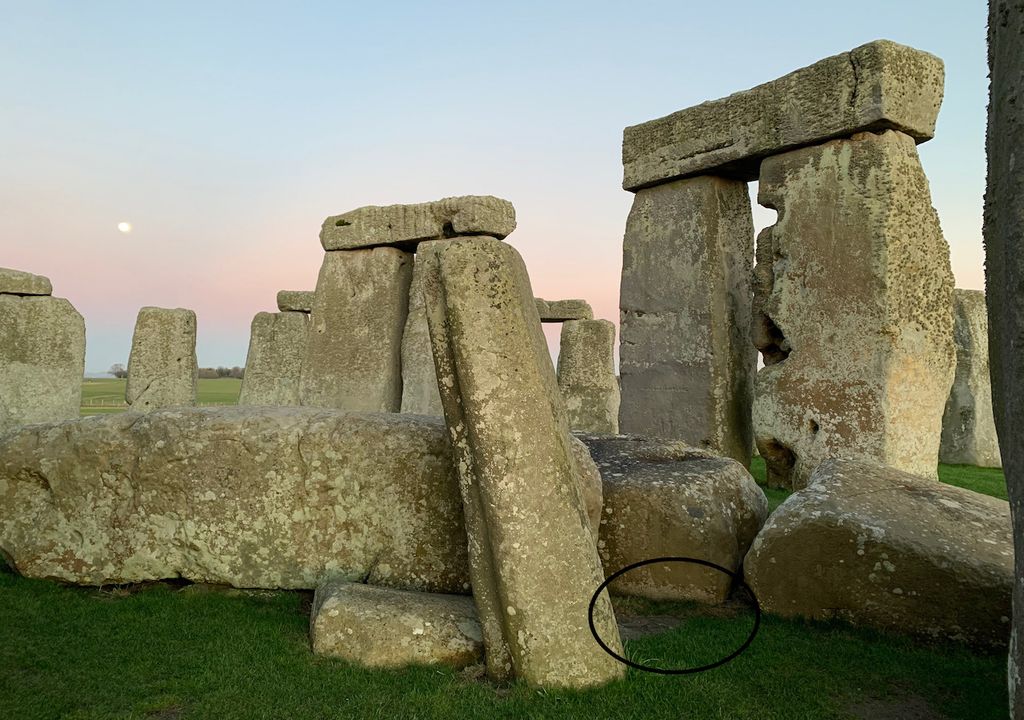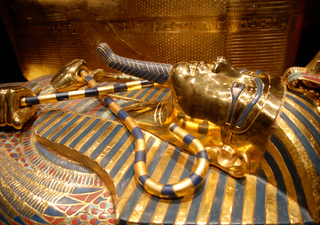Stonehenge Altar Stone from North East Scotland, not Wales, but discovery overturns new questions
The Altar Stone was once presumed to come from Wales like many of Stonehenge's other "bluestones". Scientists say they are "shocked" by what they found. What questions does this overturn about Stonehenge's mysteries?

The six-tonne, 5 metre high Altar Stone of Stonehenge, sitting at its centre, was actually from Scotland, now Wales, new research shows, surprising even the scientists themselves who made the conclusion. It was somehow moved from over 450 miles away.
Many of Stonehenge's stones were assumed to come from Wales, having transported 125 miles to where they now stand proud on Salisbury Plain, Wiltshire. One of the central stones, an “altar stone”, is not Welsh, but Scottish, and from the North to the North East of Scotland.
Scientists were shocked and surprised by their finding. The enormously heavy stone must have been dragged or transported by floating it on water from the North East tip of Scotland. This distance is nearly four times further than the location of Wales.
Types of stones
The smaller stones of Stonehenge are called bluestones, perhaps due to some having a blueish tinge. They were all thought to have all come from the Preseli Hills in South West Wales. Recent science has shown us this assumption couldn’t be more wrong, and that is clear to see with the new discovery of the alter stone’s origins.
The Altar Stone must have been taken by prehistoric people from at least as far as Inverness, maybe Orkney. Made of old red sandstone, a locally recognised rock type in these regions of Scotland, it is still classed as a bluestone, but a "non-local" kind. Originally, it was thought to have originated from Wales like many other stones there, where some were presumed to come from the Preseli Hills in Pembrokeshire.
How they cracked it
Nick Pearce, professor of geography and earth sciences at Aberystwyth University is one of the co-authors who found the conclusion completely unexpected.
To “crack the code” of the Alter Stone’s secret origins, they analysed the geochemistry and age of the mineral composition within fragments of the stone. The results of the geochemical analysis matched it with rock outcrops known from North East Scotland - where a difference to Welsh bedrock was clear.
Spearheaded by Curtin University, and the works of Anthony Clarke's PhD, the study was published in Nature on Wednesday as a result of efforts made by experts from Australia, Wales and England.
“Our analysis found specific mineral grains in the Altar Stone are mostly between 1000 to 2000 million years old, while other minerals are around 450 million years old,” PhD student Anthony Clarke said.
My final PhD paper is out in @Nature. Using the isotopic analysis of tiny minerals like a fingerprint, we show that the Altar Stone was sourced from the Orcadian Basin??????Over 700 km from southern England! @CurtinUni @TimescalesEPS @UniofAdelaide @AberUni @CDurango4 @ChronKirkland pic.twitter.com/9HFb2bKMsM
— Anthony Clarke (@anthony__clarke) August 14, 2024
“This provides a distinct chemical fingerprint suggesting the stone came from rocks in the Orcadian Basin, Scotland, at least 750 kilometres away from Stonehenge.
“Given its Scottish origins, the findings raise fascinating questions, considering the technological constraints of the Neolithic era, as to how such a massive stone was transported over vast distances around 2600 BC.
Clarke added why the discovery was personal. “This discovery also holds personal significance for me. I grew up in the Mynydd Preseli, Wales, where some of Stonehenge’s stones came from. I first visited Stonehenge when I was one year old and now at 25, I returned from Australia to help make this scientific discovery – you could say I’ve come full circle at the stone circle.”
Implications and secrets
Having to transport the stone even further than Wales shows there must have been amazing transport methods implemented at the time, around 5000 years ago. These methods appear to be “unexpectedly advanced” to archaeologists.
Professor Chris Kirkland is another co-author who reflected on the illumination of Britain’s ancient people: "Our discovery of the Altar Stone’s origins highlights a significant level of societal coordination during the Neolithic period and helps paint a fascinating picture of prehistoric Britain."
“Transporting such massive cargo overland from Scotland to southern England would have been extremely challenging, indicating a likely marine shipping route along the coast of Britain.
“This implies long-distance trade networks and a higher level of societal organisation than is widely understood to have existed during the Neolithic period in Britain.”
The quest is not over yet. The race is now on to find where the stone actually came from in North East Scotland. Some other questions need to be answered too, such as; Why was the Altar Stone taken from so far north of Britain, over 700 kilometres to what is now this part of Wiltshire?








